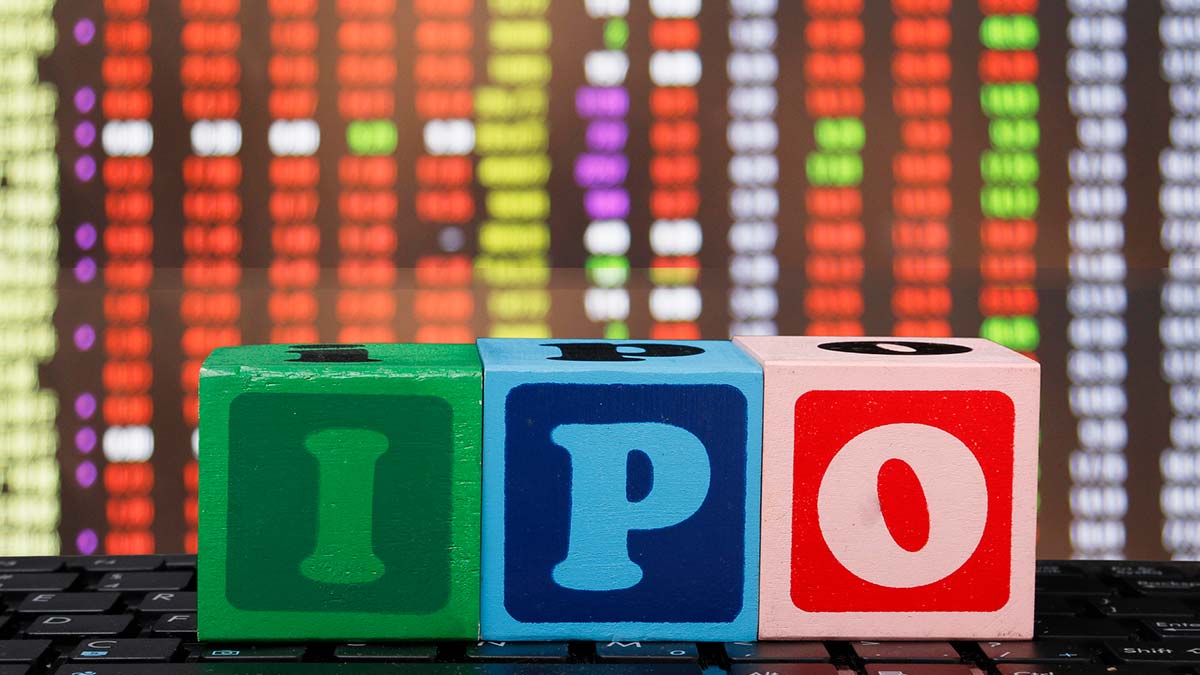The ABCs of IPOs: our expert explains what you need to know

Initial Public Offerings aren’t easy money like they were in the dot com days, but there are still good opportunities if you know what to look for, says corporate finance expert Nathan Barbarich, of RM Corporate Finance.
Welcome to the Stockhead Expert panel. In plain language, what’s your job?
I’m an investment banker. When I’m talking to a layperson, I usually say something like “that’s a fancy word for a stockbroker”. I help companies raise money and I help companies acquire other companies or other projects or assets.
If I was at a pub talking to someone who knew absolutely nothing, I’d say: “If Woollies wanted to take over Coles, they would probably call me to: a) work out how to do it legally and efficiently and then b) help them raise the money to pay for it”.
I used to work for ABN Amro in the big end of town. We did things like the Telstra float and other multi-billion-dollar IPOs and transactions. I now work for a small-to-medium Australian firm with 45-odd people. Our focus is on the micro to small or medium cap sector.
Last year you managed four Initial Public Offerings. Can you explain the basics of why a company goes to IPO?
Companies typically IPO because they think they’ve reached the end of their tether in terms of private funding. Borrowing from family and friends is the first step, going to the bank is the second step, and then there’s only so far that will take you.
If you have one fish and chip shop, you can maybe get to three fish and chip shops on family friends and borrowed money. Once you get beyond that and you want to become a chain, you need access to larger funding alternatives and that’s generally the equity capital markets.
Typically an IPO is done by a company for one of two main reasons:
- To access capital markets for funding for the growth, expansion and operations of the company, or
- As an exit strategy for the founders or vendors. The directors or founders will exit wholly or partially through an IPO (they sell down their stake). Or more subtly, because the company is listed, they now have a liquid asset they can exit in the future.
What key things should investors take note of in an IPO prospectus?
Investors need to look at the pricing of the business. There’s a potential for vendors or founders to see an IPO as the golden goose — a place they can get a price for their company they wouldn’t be able to get elsewhere.
Investors need to consider that just because it’s an IPO it doesn’t mean it’s successful.
There was a time in 1999 and the early 2000s where if a company was IPOing, you didn’t even ask what it did. If it was an IPO, it was going to go up, and if you were lucky enough to secure an allocation to an IPO you made money – it just it just happened.
There’s still a hangover from that. Until the first half of this year, people thought if it was IPOing it would go up — and there’d be a stag profit. That view holds particularly when the IPO is oversubscribed.
If you’re raising say $10 million and you have demand for $20 million and you scale people back so that not everybody gets what they asked for, people automatically assume the $10 million of pent-up demand will be there in the market to push the price up. But that is almost never the case.
When I’m dealing with companies that want to IPO, I’m very firm that we have to be pricing the business at a level that is attractive to the investor.
There has to be some upward price movement for the investor coming in to IPO, otherwise why wouldn’t they wait? If it’s a 20c IPO, they’ll just wait and take it at 16 cents two days after it IPOs.
In my opinion, vendors should list at a competitive valuation so a) they get their IPO away and b) they are very large holders in the company going forward, so the price appreciation benefits them as much as anybody else.
What is the general outlook for the IPO market?
It’s probably a little soft still. The IPO market in 2016 was very, very strong. Then towards the end of 2016 around November and December we had a couple of larger transactions pulled. We got what we refer to as deal fatigue. The market was just a bit sick of seeing more and more deals come on to the market.
In the first half of 2017 it’s been quite tough. There’s been a number of companies that have listed and actually started trading at below their IPO or initial price. With hard work and good news flow some have struggled back above parity, but some are still below.
At the big end of town, there’s been a number of deals that have been pulled. In the smaller end of town where we operate it’s still doable but it’s tougher than it was last year.
Are certain sectors performing better than others when it comes to IPOs?
In 2016, technology was flying and particularly Israeli tech was very strong. Probably they are a little weaker now because there’s a perception all the good stuff came onto the market in 2016 and what might be coming now is a little bit second-rate. I don’t actually agree with that, but that’s probably the perception.
The tech sector is still the place to be. I have done three or four deals in Israeli technology, two of which IPOed. The next three or four things I’m looking at the moment are [in that area].
Probably the biggest trend in the market over the last couple years has been clean energy, renewable energy and battery technology for battery power storage and electric cars, etc. That has dragged along with it the lithium, cobalt, graphite, etc. I’ve done a couple of things of late in lithium and graphite. The company has a couple of cobalt plays and I think that’s probably the hot area of discussion at the moment.
When you’re investing in a company what do you look for?
Is it anywhere near a monopoly or does it have a strong position in its market? Who else does what it does? If everybody does it then you have to be very good or very cheap, or both. What are the barriers to entry to be a competitor?
If I make fidget spinners and I’m the only guy in the world that makes them and I have a patent over them, then maybe I’ve got a market. But if what I’m doing is relatively easy to copy or there are low barriers to entry, then that’s difficult.
You don’t want to put a whole lot of capital into something that somebody else, particularly the Chinese, can replicate and even improve on in a short amount of time.
If it if it costs you twenty bucks a piece to make a fidget spinner, you’re probably not doing it right. But if you’re doing it in a really streamlined process that works and is repeatable, quality control is there, and you can do it at a low cost for a good quality product, then that will always give you a competitive advantage.
What picks are you most proud of?
I’ve been involved in some pretty good companies that have listed. I’m quite proud of the fact that I was at the coalface with lithium. I did a placement for a company now called Lithium Australia (LIT) when it was called Cobra Montana.
They were looking at getting into the lithium part of the world in 2013. I did a placement for them at 3.5c to look at some lithium projects and get into that space. Then lithium started to take off and I think the stock went to 35c or 38c. So, it was a ten-bagger.
I was very early to the lithium space. I was also quite early on graphite, which is another battery component for rechargeable batteries. I floated Graphex Mining (GPS), which is an expandable graphite company that really was one of the first movers.
What sectors look very promising at the moment? What would you stay away from?
The mining sector is due to start returning to favour. Stockpiled levels of most of the major commodities are at low points. Like it or not, our world is commodity-driven. So, I think the old faithfuls of nickel and copper and silver, etc, are likely to return to favour in the not-too-distant future.
I’m a huge uranium bull, although on a very long-term basis. Fukushima pretty much decimated the market for uranium a couple of years ago, but I think clean energy is the way forward and uranium is only going one way. You’re already seeing planning or construction of nuclear power plants in Europe returning to speed. It’s going to take a little bit longer in Japan for obvious reasons, but even there the discussion has started again.
I’m also a big fan of technology. The world at the moment is driven by reinventing the mouse trap, finding better, cleaner, smarter, easier ways to things.
Is there a book or movie or TV show you’re passionate about at the moment?
I loved Wall Street. It’s a bit of a thing for guys in my industry. I have a signed Wall Street poster on my wall in my office. My favourite movies are The Godfather series. I just watched them all on a plane coming home from London.
Nathan Barbarich, is head of corporate finance at RM Corporate Finance, a specialist in small to mid-cap companies. Perth-based RM Corporate provides expertise in capital raisings for listed and unlisted companies, underwriting and sub-underwriting, acquisitions and divestments.
RM Corporate Finance’s niche market in Western Australia provides corporate, private clients and Authorised Representatives with unique access to mezzanine and seed capital raisings and a broad range of investment banking transactions that larger firms are not easily able to expose their advisers and client base to.
Nathan owns shares in Graphex Mining.
This article does not constitute financial product advice. You should consider obtaining independent advice before making any financial decisions.
UNLOCK INSIGHTS
Discover the untold stories of emerging ASX stocks.
Daily news and expert analysis, it's free to subscribe.
By proceeding, you confirm you understand that we handle personal information in accordance with our Privacy Policy.








